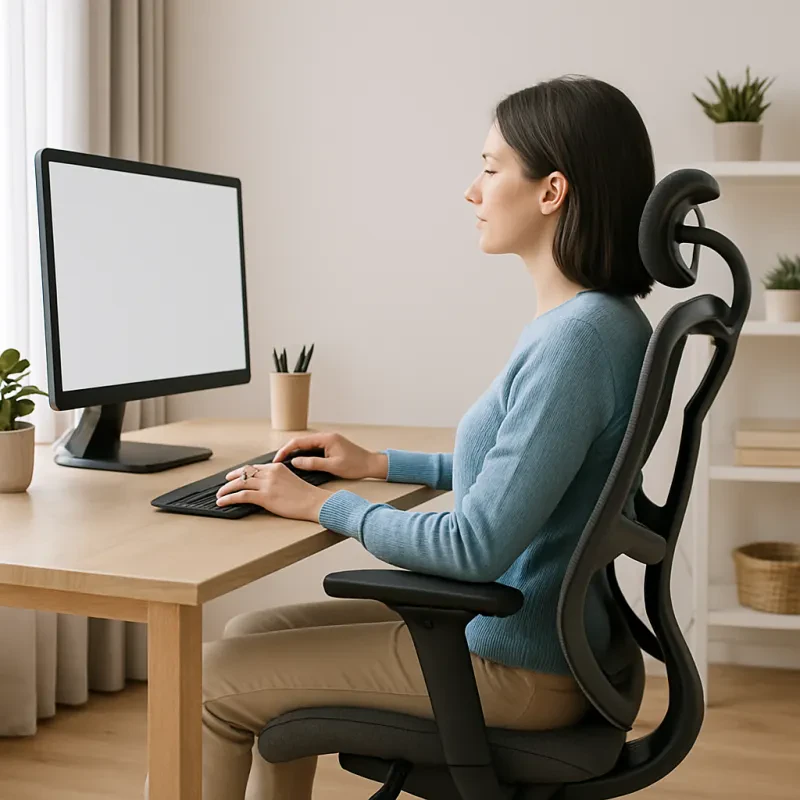If you’ve ever had a stiff neck, aching lower back, or sore wrists after a long day of work, you’re not alone. These discomforts are often signs that your body is struggling to keep up with poor posture, repetitive strain, or an unsupportive setup. And this is exactly where two key professionals come in—chiropractors and physical therapists.
These experts don’t just treat pain—they help design the path to a healthier, more ergonomic lifestyle. In fact, many of the ergonomic products and advice we rely on today have roots in the practical knowledge these practitioners bring to the table.
So, how exactly do chiropractors and physical therapists shape ergonomic health? Let’s break it down.
What Is Ergonomic Health?
Before we dive into their roles, let’s quickly revisit what we mean by “ergonomic health.” At its core, ergonomics is all about fitting your environment to your body—not the other way around. When we talk about ergonomic health, we’re referring to your body's ability to function comfortably, efficiently, and safely in your daily environment—whether you're working at a desk, driving, or just relaxing at home.
When done right, ergonomic design helps reduce:
-
Muscle strain
-
Joint stress
-
Repetitive motion injuries
-
Long-term postural issues
And while furniture designers and engineers play a big part in this, it’s often health professionals—especially chiropractors and physical therapists—who inform what “healthy design” should look like in the first place.
The Chiropractor’s Role in Ergonomics
Chiropractors are known for spinal adjustments and back care, but their influence goes much further when it comes to ergonomics.
1. Identifying Postural Imbalances
One of the first things a chiropractor will look at is how your posture affects your spine and nervous system. They can spot misalignments or chronic habits—like hunching over a laptop—that might be causing back pain, shoulder tension, or headaches.
By identifying these issues early, chiropractors can recommend changes to your setup or daily routine to prevent long-term damage.
2. Recommending Ergonomic Tools
Many chiropractors suggest specific ergonomic tools for at-home or workplace use, including:
-
Lumbar support cushions
-
Sit-stand desks
-
Monitor risers
-
Ergonomic chairs
-
Footrests or angled platforms
These recommendations aren’t just guesses—they’re based on real-world experience and knowledge of how different tools affect spinal health.
3. Spinal Adjustments for Recovery and Prevention
When your spine is out of alignment, everything else gets thrown off. Chiropractic adjustments can relieve pain, increase mobility, and even reduce pressure on nerves. That’s not just treatment—it’s a way to bring your body back into a balanced, ergonomic state.
The Physical Therapist’s Role in Ergonomics
Physical therapists are movement experts. While chiropractors tend to focus more on the spine and nervous system, PTs assess how the whole body moves and functions—and help you fix what’s not working.
1. Functional Movement Assessments
PTs often start with a movement screening to look for muscle imbalances, joint stiffness, or movement patterns that could lead to injury. These insights directly translate into ergonomic advice—for example, if your hip flexors are tight from sitting too long, your PT might recommend stretches and an ergonomic chair that encourages better pelvic alignment.
2. Workplace Ergonomic Evaluations
Physical therapists often perform in-person or virtual ergonomic assessments of a person’s home or office setup. They may suggest changes like:
-
Adjusting monitor height
-
Repositioning keyboard and mouse to prevent wrist strain
-
Recommending foot support to reduce pressure on the lower back
This is where PTs really shine—they individualize recommendations based on how your body moves and feels.
3. Rehabilitation and Preventive Training
If you’ve already experienced an injury like carpal tunnel syndrome or sciatica, PTs guide you through recovery and then help prevent recurrence through exercises, posture training, and movement education.
Working Together: Chiropractic + PT = A Powerful Combo
While chiropractors and physical therapists have different training backgrounds, their work often overlaps. In fact, many people benefit most when the two work together.
Here’s a quick example:
-
A chiropractor realigns your spine and reduces nerve compression.
-
A physical therapist then helps you retrain your posture and strengthen supporting muscles so the issue doesn’t come back.
Together, they create a full-circle approach to ergonomic health: one that focuses on immediate relief and long-term function.
Real-World Impact: From the Clinic to the Office
You might be wondering—how does all of this influence the products we use or the advice we hear?
1. They Inform Ergonomic Product Design
Many companies consult with chiropractors and PTs when developing ergonomic products. For instance:
-
Ergonomic chairs are often shaped to follow the natural curve of the spine—knowledge that comes from spinal health research.
-
Split keyboards and vertical mice are designed to follow the neutral wrist and arm positions recommended by therapists.
2. They Shape Workplace Wellness Programs
Larger companies now include chiropractors and physical therapists in wellness initiatives. Employees get assessments, stretching routines, and personalized ergonomic tips that go beyond the basics.
3. They Educate the Public
Whether through social media, online workshops, or clinic visits, these professionals are teaching people how to live and work better—from how to set up a desk, to the right way to stretch, to which pillow to buy for better sleep.
How to Apply Their Wisdom to Your Own Setup
Even if you’re not currently seeing a chiropractor or physical therapist, you can still benefit from their knowledge. Here are a few actionable takeaways:
-
Listen to your body. Pain is often the first sign your setup needs an adjustment.
-
Move frequently. No matter how ergonomic your chair is, movement is key.
-
Don’t ignore posture. Whether sitting or standing, good posture reduces fatigue and tension.
-
Invest in the right tools. Products like ergonomic seat cushions, adjustable desks, or vertical mice can make a big difference.
-
Consider a professional assessment. If you’ve had chronic discomfort, a one-time visit to a PT or chiropractor can unlock a ton of insights.
Final Thoughts
Ergonomics isn't just about furniture—it’s about your body, your habits, and the professionals who help you stay healthy in a modern world built for sitting and scrolling.
Chiropractors and physical therapists are more than just back crackers or rehab coaches. They are partners in designing a life that supports your spine, your muscles, and your overall well-being. The next time you reach for that lumbar cushion or raise your monitor a few inches, remember—there’s science and experience behind every ergonomic decision.



